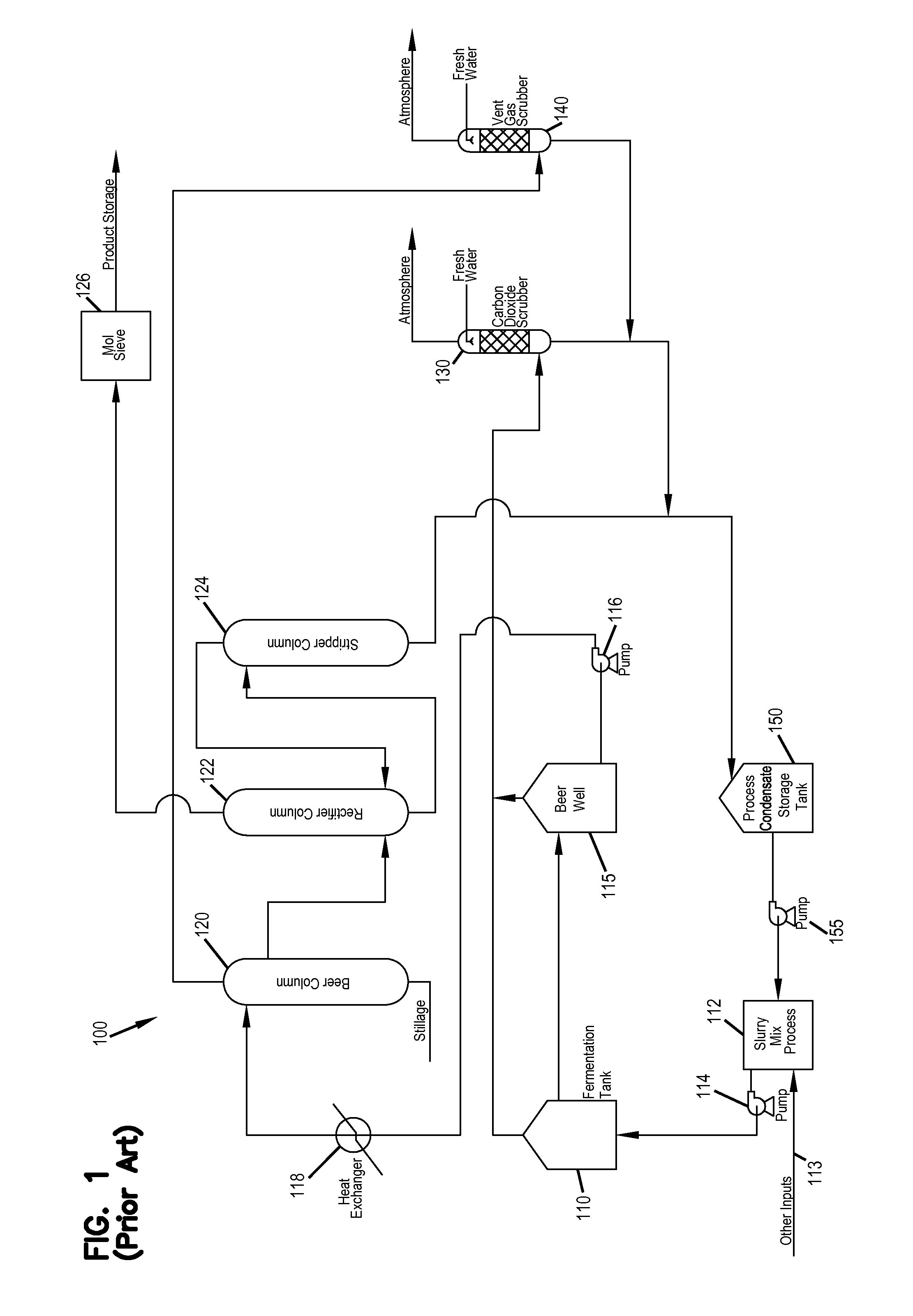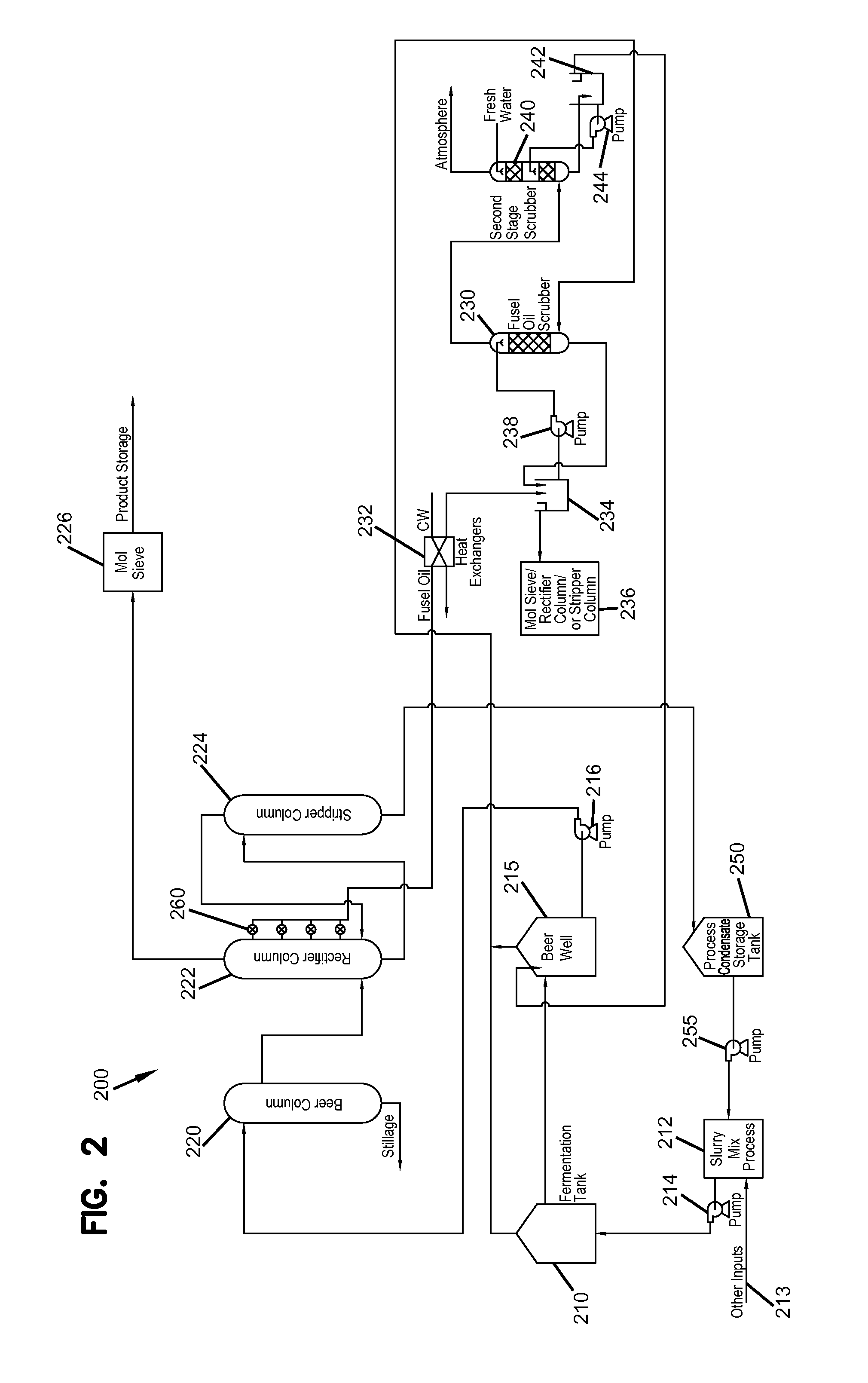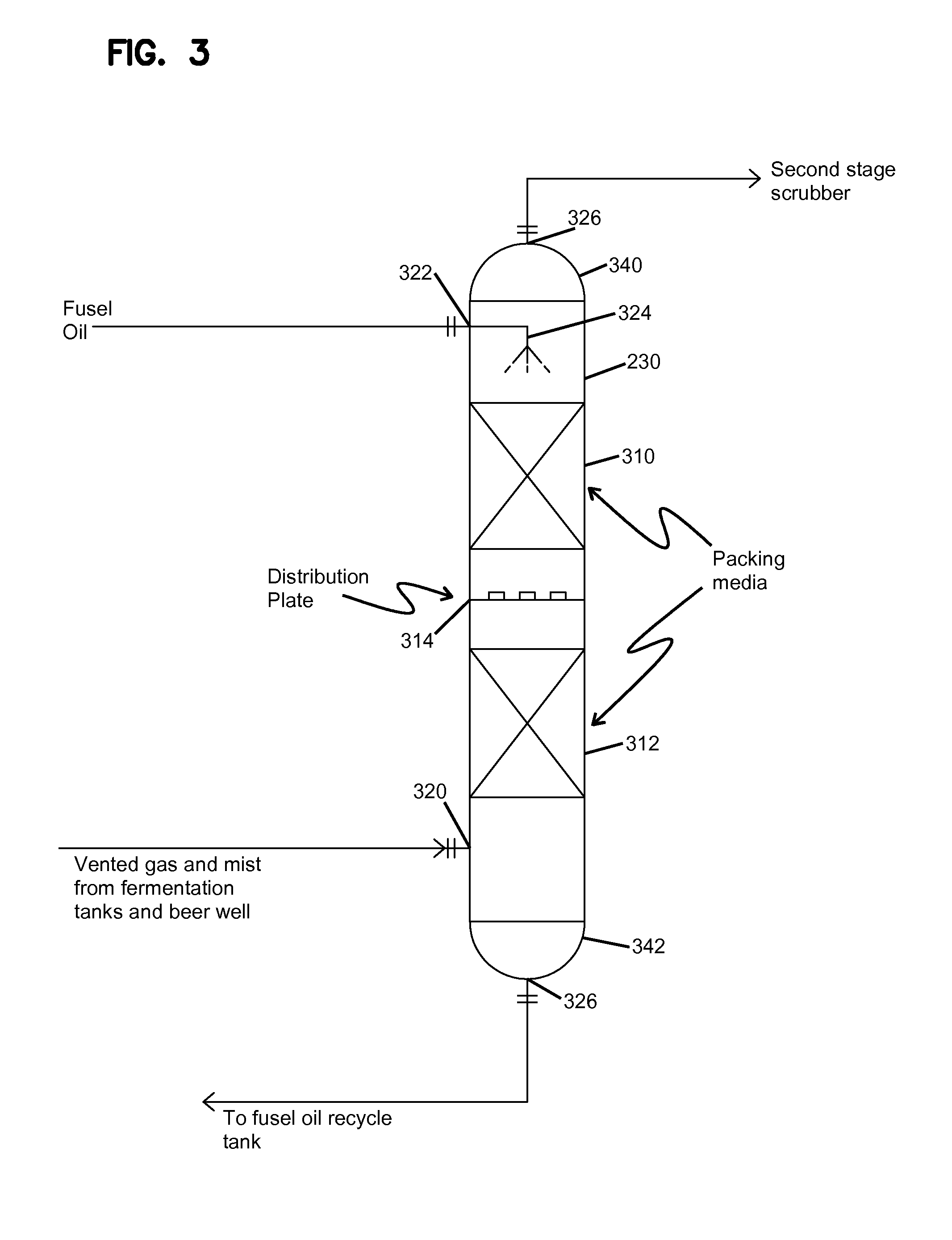Packed bed scrubber using a fusel oil solvent
a fusel oil and solvent technology, applied in the field of ethanol production system and method, can solve the problems of limited production capacity of the facility, difficult production, limited fermentation process, etc., and achieve the effects of increasing the concentration of ethanol in the scrubbing solvent, reducing the concentration of sulfate, and increasing the efficiency of ethanol production
- Summary
- Abstract
- Description
- Claims
- Application Information
AI Technical Summary
Benefits of technology
Problems solved by technology
Method used
Image
Examples
first embodiment
[0046]According to the present invention, a procedure of producing ethanol, as shown in FIG. 5, is as follows:
[0047]mashing feedstock, such as corn, sorghum, barley, wheat, potatoes, sugar cane, agricultural residues etc, by mixing the feedstock with water and other inputs, such as enzymes (step 510);
[0048]fermenting the mashed feedstock by adding, for example, yeast (step 512). A beer product and hazardous air pollutants are produced in the fermentation process;
[0049]storing the beer product in the beer well 215 (step 514);
[0050]distilling the beer into ethanol (step 516) reaching 95% purity in the rectifier column 222. Other by-products including fusel oils are also isolated in the rectifier column 222;
[0051]dehydrating the ethanol (step 518) into 99.4% ethanol in the molecular sieve 226, for example by using a desiccant;
[0052]storing the ethanol for usage and / or transport (step 520);
[0053]tapping fusel oil produced and trapped in the rectifier column 222 (step 532). Ethanol and w...
second embodiment
[0063]FIG. 7 shows a second exemplary embodiment of an ethanol production system according to the present invention, generally designated 700. The system 700 is configured in the same manner as the first exemplary ethanol production system shown in FIG. 2. However, as shown in FIG. 7, the system 700 uses the recycled ethanol / water mix in the heat exchanger 232 to decrease the temperature of the tapped fusel oil blend and to increase the temperature of the ethanol / water mix. This heat exchange step has the dual benefit of cooling the fusel oil to below the boiling point of acetaldehyde and heating the alcohol / water mix for prior to entering the beer column.
[0064]According to the second embodiment of the present invention, a procedure of producing ethanol, as shown in FIG. 8, is as follows:
[0065]mashing feedstock, such as corn, sorghum, barley, wheat, potatoes, sugar cane, agricultural residues etc, by mixing the feedstock with water and other inputs, such as enzymes (step 810);
[0066...
PUM
| Property | Measurement | Unit |
|---|---|---|
| Temperature | aaaaa | aaaaa |
Abstract
Description
Claims
Application Information
 Login to View More
Login to View More - R&D
- Intellectual Property
- Life Sciences
- Materials
- Tech Scout
- Unparalleled Data Quality
- Higher Quality Content
- 60% Fewer Hallucinations
Browse by: Latest US Patents, China's latest patents, Technical Efficacy Thesaurus, Application Domain, Technology Topic, Popular Technical Reports.
© 2025 PatSnap. All rights reserved.Legal|Privacy policy|Modern Slavery Act Transparency Statement|Sitemap|About US| Contact US: help@patsnap.com



